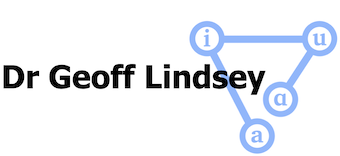That that
 Today I’m continuing to look at small, frequent English words which are tricky for non-natives because some are generally strong and some are generally weak.
Today I’m continuing to look at small, frequent English words which are tricky for non-natives because some are generally strong and some are generally weak.
In the past three posts I’ve considered the numerals one, two and four, which are usually strong, and the prepositions to and for, which are usually weak. Non-natives often pronounce two and to similarly, likewise four and for, but they should be kept distinct.
The same kind of distinction exists between the two words written that. One that is demonstrative (or ‘pointing’), as in that book or that’s my car. Demonstrative that is strong and transcribed /ðat/ (or /ðæt/). The other that is the conjunction that, which links to a subordinate clause, eg show me that you care or the things that I like. Conjunction that is usually weak, containing the colourless vowel schwa, /ə/, which is not shown in spelling. It’s important to understand that the weakening of conjunction that, like the weakening of to and for, happens even in careful speech styles like lecturing and political speech making.
To illustrate the distinction between the two kinds of that, here are real utterances in which native speakers say the conjunction and the demonstrative in sequence, /ðət ðat/:
Those who think of speech only in articulatory terms may see weakening as the lazy articulation of unimportant words. This misses the point that speech is a communicative system designed for perception and understanding. English makes communicative use of the strong/weak distinction to differentiate words. If you remain chained to the spellings and never weaken words like to, for and conjunction that, you’re not speaking less lazily – you’re disregarding a communicative distinction in the English language.

Thank you for this article. I particularly find the examples and audios enriching to clarify the use of weak and strong forms. It does call my attention the choice of tonality of the speakers. That is useful for non-native speakers too.